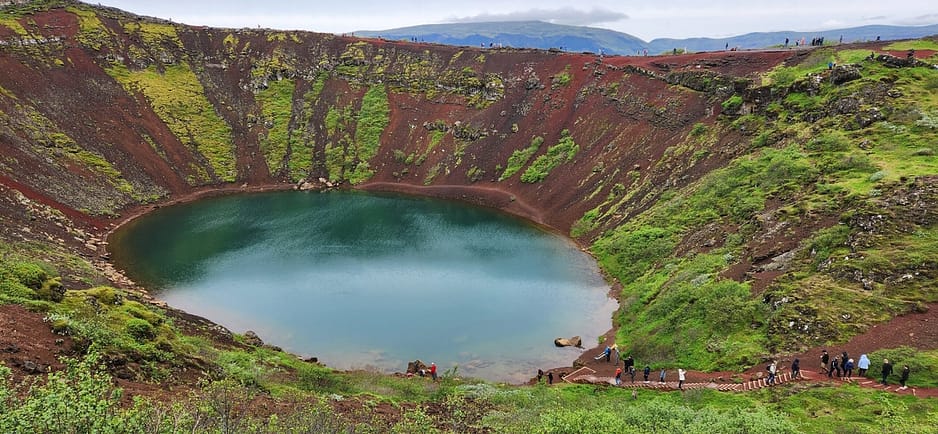I just got back from a wonderful trip with my wife and two sons to Iceland. The beauty of the landscape and the people was astounding.
At one of the last places we visited, a volcano crater lake, there was a path around the rim that got me thinking about decision-making and how different paths can be taken to reach the same destination.
The header photo shows one part of the path that had various options. One option was smooth and easy, but maybe a little less direct and there wasn't much to learn. Another was bumpier, had some more excitement and involved some risk. Each one of the options would reach the same destination. However, there were different learnings, experiences and possible benefits that would be had with each decision.
As I walked this path, I thought about how leaders can be very direct in instructing employees to take a certain option in the path to reach a destination. It's the instructing "what to do and how to do it" syndrome. They could have used that a path and it was successful so they want others to do the same thing. Some may know the risks involved with other options and don't wish to tempt the potential for failure or mistakes.
Different paths are chosen for different reasons
Choosing different paths, with different risks and rewards in order to reach a destination has various data points to understand.
Younger people may be more engaged with taking a riskier route with more excitement because they have the physical ability to tackle the challenge and learn some different things along the way. People that want to stay connected with possible learnings from a riskier path may choose a different way. Athletic people that are growing older, like me, may balance risk, reward, timing, experience, etc. in making their path choice.
In fact, shortly after I took this photo, a younger woman sprinted past me from behind down a hill to get to a scenic overlook. She nearly ran into my shoulder. She could have face planted while tripping on a rock on the way. However, she made it to the overlook much more quickly than me and my wife. She had "first to market" advantage. She took the risk. She went at a faster pace than her competition and was rewarded.
Explore letting go and having others decide how to do things
Leaders have to balance the aspects of letting employees use their own experiences, toleranaces and knowledge to reach a destination with the risks of those paths. Just because the leader may choose one path doesn't mean that's the only one, or the best one.
A certain path may bring some failure and mistakes, but they become data points that can be used for the next time. They are great learning opportunities.
Discussing the situation with employees, gaining understanding of the paths available to reach a goal, assessing the risks involved with various options and obtaining alignment from the group on the process to proceed can help all involved. Possibilities can be explored to reach the goal faster. New and valuable information can be gained along the journey. The team can become stronger from the process.
Ask yourself whether you are providing the space for individuals to explore different paths to reach a destination and how you can even open yourself up to explore different paths yourself.
And for those of you that read the entire article, here is a photo of the crater lake near where the lady almost ran into me.

